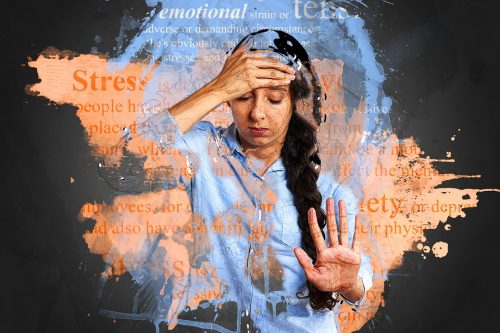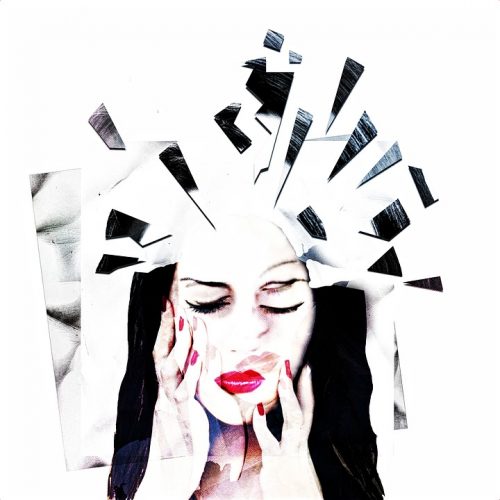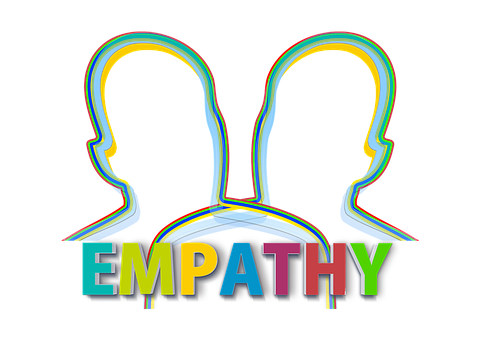
Group therapy has been used as a way of dealing with health problems and personal issues. These group therapies or support groups aim to find strength in numbers and to let you know that you are not the only one in your battle.

Group therapy has been used as a way of dealing with health problems and personal issues. These group therapies or support groups aim to find strength in numbers and to let you know that you are not the only one in your battle.

Suicide deaths and attempts are alarmingly increasing in number every year both in the youth and adult groups. In fact, research shows that it is the 10th leading cause of death in the United States.

Art has been defined by so many people in so many different ways. Some may adapt the dictionary definition of art and state that it is a creative skill. Others may get quite emotional and devotedly express “Art is life; without it, I am nothing.”
You might have heard of art therapy and how it’s lauded as one of the most effective tools for healing from mental disorders and emotional instability. But you might doubt if this form of therapy fits an inartistic you. Well, art therapy is more than just painting and drawing. Read on to find out more about it!

Continue Reading “Art Therapy And Mental Healing: The 7 Art Forms You Can Try”

Group therapy doesn’t have to be discussions about feelings and personal experiences. There are several ways in which you can spice up your group therapy sessions. Read on to find out different exciting ideas on how to make the group therapy more fun and productive. Psychotherapist Ali Miller, MFT said, “[T]here is encouragement to both talk about your life outside the group and also to talk about the dynamics within the group.”
According to a study, art therapy was successful. This therapy has helped its participants in the areas of perception, personal integration, emotion regulation, behavior, and insight and comprehension. “Art Therapy gives voice to clients’ experience and stories, as well as provides empowerment for their lives,” says Elena Lamaak, MA, LMHC.
Holding a group art therapy is not as difficult as it might seem. You and your group may hold a painting session or a pottery class. Art has been a frequently used mode of expression for people. In art, participants can express their emotions and experiences that they couldn’t do so in words.
Centering on culture can be a great way to start your group therapy sessions. Discussing culture can promote tolerance, challenge perceptions, and learn more from each other. Interestingly, researchers found out that some cultures are more friendly to mental health and illnesses than others.
If you want to discuss different cultures in your group therapy, host an adult version of a show-and-tell. To do this, ask your participants to bring a token that represents their family culture or history. Then, have each one of the participants explain what these tokens mean. You can also give a portion of the time for the participants to ask questions to each other.
Music brings everyone together, so this is a good idea to start your group therapy session. Similar to art therapy, music therapy allows people to express their thoughts and feelings that couldn’t usually be expressed in words. Moreover, it is found that music actually reduces stress. Before, it is believed that music strengthens bonds, connects people spiritually, and fosters group cohesion. “Music has such a large impact on our lives! It crosses cultures, age groups and has an effect on everyone. It can make you smile, dance, sing, cry, instantly recall memories like they were yesterday and process emotion.” As explained by Abigail Saneholtz, Psy.D.
To start a music therapy, just bring a guitar and let the music do its thing. You may sing popular songs or make your own lyrics. Encourage your participants to bring an instrument of their own. Also, try to give compliments along the way. Some participants get shy because they think they’re not good at singing or playing the instruments. But, most of the time, that’s not true.
This is an activity from the Lesley University. Lifeline is an activity that lets participants review their life and see how far they have come. It is effortless to do and only requires a pen and a piece of paper.
To do the activity, a participant must make two points on the paper, labeled ‘birth’ and ‘now.’ They must be connected by a straight line. On that line, identify three high points and three low points of your life. Then, join these points with a zigzag line. After accomplishing this, have each of the participants explain what they drew and what it means to them.
This is a fun activity that allows each participant to reflect on what the right thing to do is. First, have your participants discuss Kohlberg’s six stages of morality. Then, make a book of laws regarding this discussion, including at least one page on these topics:

There are several ways to make your group therapies more fun and effective. If you are looking for more ideas, then don’t hesitate to try one of these methods.

According to Marla W. Deibler, PsyD, “It’s ‘normal’ to experience some degree of anxiety when stressors are unfamiliar, unpredictable, or imminent.” Anxiety is very evident in young professionals. These young professionals are struggling to find contentment and happiness in their work in the era of social media.
Are you one of those people who was thrown into the cruel world after graduation, with no chance even to find your place? If you were struggling with finances as I was, you will find yourself lucky if you were able to find any work that would give even minimum salary.
Once you open your social media account, you instantly become envious of the posts of your friends who had it better financially. Your anxiety builds up when you see your friends chilling out at the beach and living the jet-setter life, while you’re still stuck in the office. Alicia H. Clark, Psy.D., a licensed clinical psychologist explains the scenario by stating, “Think about what our devices have done to the fabric of our society. When you go to a restaurant, you’ll see an entire family on their phones. While I’m sure [the rise in social anxiety] is a combination of many factors, I think all of us intuitively understand that it has something to do with technology.”
You’re working for five years already but you feel as if you’re already lost twenty years of your life. At the end of the day, even after giving your all, you feel that you’re still at the bottom of the food chain. You’re feeling burnt-out because of pressures from your boss and co-workers, and there’s a bleak chance at promotion.
How can you alleviate anxiety in a world that glorifies only the best? How can you be your personal best at your own pace? Read up and know how.

Maintain Work-Life Balance
You should be able to strike the right balance between work and your personal life. They say all work and no play makes a person dull.
Are you always the last one to leave the office? Are you accepting calls from your superior even after office hours? Scared that you will be laid off if you don’t receive work on the weekends?
Think of your personal welfare first. You should be the one to set limits. No one will be able to fight for you unless you do it yourself. Use your weekends to recharge and engage in activities that excite you. Working even on the weekends will increase your anxiety and make you susceptible to burnout. “A number of studies have shown that taking time away from the job can have physical and psychological health benefits. People who take vacations have lower stress, less risk of heart disease, a better outlook on life, and more motivation to achieve goals.” That is according to Shannon Torberg, PsyD, LP.
When was the last day you were out with your friends? Without really thinking about the pending work you have at the office?
Appreciate the time spent with friends and family. Live in the moment! Don’t spend too much time on social media and being anxious about taking the best pictures. Or thinking about the pending work at the office.
Seek Expert Advice
Upon starting this journey towards a better you, it is essential that a medical professional will be able to monitor your progress. If you know you’re feeling anxious all the time, a medical professional will be able to diagnose if you’re suffering from a specific condition.
Set a schedule with a medical professional. This will definitely help you in the long-run.

Live Life At Your Own Pace
Be happy for your friends who are enjoying their life now. You will also get to enjoy yours, sooner or later. You should be able to understand that people have their own timelines.
Think back of your struggles from three years ago. You will be able to realize that you have improved a lot. Using this method often will make you grateful for your journey. Remember that everyone has their own kind of struggle. Don’t worry if you’re struggling a lot now.

Art comes in innumerable forms. As explained by Douglas Mitchell, LMFT, “There are various uses for art therapy with regards to healing, but the benefits may surprise you if you’ve never heard of art as a form of therapy.” It has been long defined by so many different people, in so many different ways. Countless purposes have been enumerated. And today, one emerging purpose continuously being explored is to heal.
“Mental health includes our emotional, psychological, and social well-being. It affects how we think, feel, and act.” Catherine Cleveland M.S., LMHC-P said. Mental health is an aspect that is now being given attention and importance. It has been a very sensitive topic that has been avoided for so long. Further, mental health has been a deeply misunderstood condition, often, given a direct relation to mental hospitals and craziness.
Very similar to art, mental health gives rise to different meanings for different people. It may be as complicated as shaking and screaming at the sight of something that triggers a miserable memory. Or, it may be as familiar as not having the motivation to get out of bed in the morning. Mental Health is indeed a very complicated subject that cannot be easily interpreted.
And now, the question is, how can we heal it? How can we restore a healthy mental state? Is such thing possible? We must understand first that it is different for many people. As we’ve read in many BetterHelp articles, what may work for some may not work for others. That this is the way a person copes, while this utterly alien technique is how another person copes. And that it is fine.
Rising to quick judgments about this will not truly help the person. In fact, it may just discourage that person. We must understand that we have been endowed with different minds, that we all think in our own unique ways–in our personal capacities and speeds. And that there is nothing we can do about it but to embrace it–to develop it.

Art And Mental Health: Connected
Now, how can we connect art and mental health? In 2004, “creativity in counseling” was finally formalized within the American Counseling Association (ACA) as its 19th Division. This formalization gave birth to the Association for Creativity in Counseling (ACC). But long before this event, creative approaches to treatment have been applied by so many psychiatrists and counselors. And this exploration has led to improved communication, authentic self-expression and helped establish human potential.
In addition to this, group therapy is emerging as an efficient way for people to heal. The addition of several fresh perspectives from people with similar experiences helps patients cope. This method acts as a support group–a network of people with similar experiences yet dissimilar opinions.
Further, the support network helped generate relief for people and gave assurance that you are not alone in fighting for mental health. Often, people are afraid to open up and think that they are “weird” or “different,” when in fact, there are people out there who undergo the same experiences. And this kind of therapy helps foster a mutual connection between patients and result in rewarding experiences.

Now What?
Now that we have established that, what course of action should we take? Explore. Let us take this opportunity to explore this method to help contribute to a better, healthy state of mind. “Negative thoughts are just a part of life, but they don’t have to consume you. Instead of trying to ignore those thoughts altogether, try countering them with positive statements.” Licensed clinical psychologist John Mayer, Ph.D. said.
Yes, it is an endless chain of possibilities. Yes, different people think differently and cope differently. But these dissimilarities are what makes us similar. This is a proof that we are all unique–in our own special way. And that each and every uniqueness possessed by each and every one of us are equally important.
What is the concept of a joint treatment approach? How can peer counseling through joint treatment help us with our daily struggles in life? Discover all in this article and know more about this counseling.

Instead, we fear that we have no one to talk to, so we shut ourselves out. We lock our rooms. We put on our headphones and sulk into the abyss of despair and overthinking.
Continue Reading “Fighting Tough Times Through Peer Counseling”
With all the recent advancements in technology, the lives of many people have become more convenient and more comfortable. An excellent example of this is online counseling, which has helped a lot of individuals ever since it became available to those with mental health issues or problems. One of the most common forms of this treatment is group counseling in an online setting.

 Source: pixabay.com
Source: pixabay.com
When you’re experiencing mental health problems, it is difficult to deal with the symptoms on your own, not to mention inadvisable. Seeking help through therapy is a huge step towards recovery. The good thing about therapy is that there is no single “template” to follow; many available treatments cater to various types of patients with different conditions and experiences.
Crossing the bridge to seek help for your condition can be a daunting endeavor. Once people experiencing mental health problems overcome the fear and stigma enough to reach out, they immediately face another hurdle: talking to their therapist.
So, how do you prepare yourself after seeking help? How do you open up to your therapist about your condition? How do you become honest to your therapist? Sal Raichbach, PsyD often say, “Sadly, only a small percentage of people actively seek professional help for their mental health problems.” That is true.
Assess Yourself: Are You Ready For Therapy?
Before asking how to be honest to your therapist, you must be straightforward to yourself first. When people seek therapy, they do it with the idea that a therapist should be able to fix them up in no time. That is the wrong mindset to bring when coming to your therapy sessions.
Going to therapy means being ready to go to therapy. If you remain closed off or unprepared for the treatment your physician might come up with, recovery will remain unachievable too. You have to be sure you’re ready to reach out. Wanting to recover does not automatically translate to being prepared to face your therapist. Be clear about the difference with yourself; otherwise, going to therapy will be counterproductive.
 Source: pexels.com
Source: pexels.com
Start Small: Trusting Your Therapist
Trust between you and your therapist is a vital aspect of your treatment. You have to accept that recovery means discussing things that might be painful or even traumatic. But you do not need to discuss anything you don’t want to, not without your express permission.
You need to trust your therapist will not push you beyond what’s comfortable for you. If they do, remember that they have your best interests at heart, as well as years of education and expertise. “By building a list of people that you trust, with whom you can talk to in times of need, you allow yourself a strong sense of not being alone.” A reminder from David Klow, a licensed therapist.
You do not need to unload every thought and feeling to your therapist immediately. Tell them about your day. Or better yet, you can also ask them about their day. Begin with a small anecdote or memory. From there, your therapist might have follow-up questions to keep you going. Once you hit a particularly sore spot, tell your therapist that you feel uncomfortable with it.
 Source: pixabay.com
Source: pixabay.com
Professional medical practitioners possess empathy, which helps them understand your situation. They might never know what it’s precisely like to be in your shoes, but they still have a pretty good idea. If you’re not ready to explore a specific issue, ask them to switch topics or offer one of your own. Your therapist might or might not push it, but remember that they know what they’re doing.
“therapy is a lot of work and this is important to keep in mind before starting. It’s imperative to understand this so that you can set realistic expectations for yourself.” Nathaniel Cilley, LMHC said. Vulnerability is part of the reason why a lot of people hesitate about being honest to therapists. They fear all sorts of things, from being judged to being hurt by other people. Seeking therapy is indeed a leap of faith sometimes, but rest assured that therapists are well-equipped and well-trained to help you recover and live your life to the fullest.